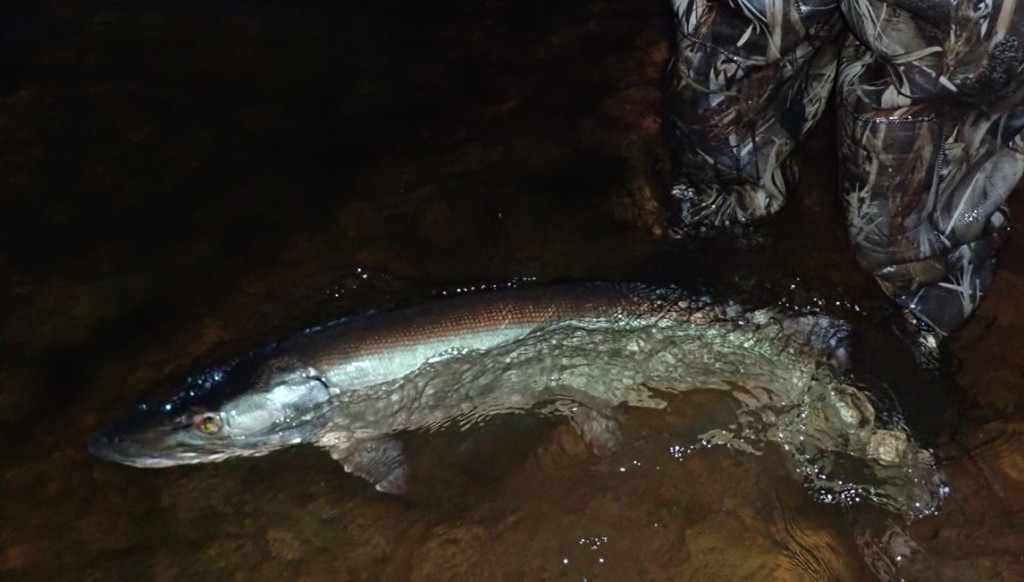Believe me, I LOVE fish pictures! Do not think that I ever get tired of looking at them.
Unfortunately, I have to admit, I cringe at many of them.
Yes, that is mostly because I am a pointy-headed fisheries biologist. I know how sensitive fish can be to being caught, handled and released. On the other hand, let me also say this: I know that they also can be very robust. That is especially true when the water is relatively cold. Even so, if you did not want to risk harming any fish in any way, then you would not try to catch them.
That is NOT an option for many of us.
Since you are going to fish, you WILL be releasing at least some of the fish you catch. You will be mandated by rules to release some of those fish, and you will choose to release others. Since you are going to be releasing them, you owe it to the fish, the resource, and other anglers to handle them right.
So, I often blog about proper fish handling. This is as good of a time as any to do it again:
When releasing, handle fish with care
Whether you intend to release a fish you catch or plan to legally keep it, the fish should be handled properly. For the fish’s sake – and yours.
Any fish you do not intend to keep should be returned to the water immediately with as little stress to the fish as possible.
That means minimal handling of the fish.
Their coat of slime can make that challenging. The slime is what protects them from diseases and parasites, but it also potentially makes grasping and holding them difficult. The more a fish is handled, the more its protective slime coat is compromised. The best way to release a fish without damage is to remove the hook and release the fish while standing in the water.
There is another option. Take an old kitchen towel with you fishing and soak it. When you catch a fish, cradle the fish in that wet towel. It not only will let you get a good grasp on the fish and prevent possible punctures from fish spines, but it will protect the fish and its slime coat. Remove the hook while holding the fish and then release the fish back into the water.
For removing hooks from fish, use needle-nose pliers or forceps. If you plan on releasing all your fish, use the pliers to bend down the barb on the point, making hook removal easier.
Another tool you can use is a net made of fish-friendly material that minimizes stress on fish. “The best fish handling is to keep a fish in the water as much as possible,” according to Daryl Bauer, fisheries outreach program manager for the Nebraska Game and Parks Commission. “Keep the fish in the water, handle them in the water, remove hooks, hold them up quickly, snap a photo, let ’em go.”
When holding a fish out of the water for a photo, the preferred method is to hold larger fish horizontally, supporting them from below.
When fishing, anglers also should avoid playing the fish to exhaustion and avoid touching a fish’s eyes or putting fingers in a fish’s gill flaps.
Knowing the sharp parts of a fish is the first step in avoiding them. Catfish and bullheads – sharp, barbed spines are located on each pectoral fin and the dorsal fin.
Grasp small fish from above, with the index finger in front of pectoral spine and third finger behind the spine on one side, with the thumb pressing from the opposite side on the head or upper body. The rest of the hand should be behind the dorsal spine. For white bass, striped bass, wiper, largemouth bass, smallmouth bass, bluegill, sunfish, and crappie, spines in the fins can cause a small puncture. For carp, spines are in the anal and dorsal fins.
On the other hand, if you want to harvest some fish for a meal, there are ways to handle that. A bucket of water or stringer will keep fish for a short time; otherwise take a cooler of ice to the lake. Place the caught fish on ice immediately.
“Fish are a perishable food product and the quality of the meal is only as good as the handling of the fish after the catch,” said Larry Pape, aquatic education specialist Game and Parks. “If possible, fish should be kept alive until just before cleaning.”
If you are just getting into fishing and want more details on planning a fishing adventure, a helpful resource is the Game and Parks’ Going Fishing Guide, available at OutdoorNebraska.gov by searching “Learn to fish.”
Purchase a fishing permit at OutdoorNebraska.gov.
If you want more specific information:
You ARE Going to be Releasing Fish, Might as well Do It Right!
Catch and Release, Big Toothies
The post Fish Handling Reminder, Again appeared first on Nebraskaland Magazine.

















